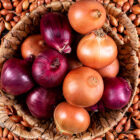When you consider Indian cuisine, what comes to mind? Is curry a food or a spice blend for you? What about ginger, cumin, and cardamom? The mere mention of traditional Indian spices makes our mouths water.
India, named ” “the Spice Kingdom,” is the world’s largest producer, consumer, and exporter of spices. Currently, the country produces approximately 75 of the 109 spice varieties listed by the International Organization for Standardization (Ios), accounting for half of the global spice trade.
Given their splendid aroma, texture, taste, and medicinal value, Indian spices are the most sought-after in the world. The global market has an insatiable appetite for pure Indian spices. Indian spices have nourished the global market with fragrance, flavor, and color and have assisted us in boosting and defining our global economy.
When Chef Sanjiv Kapoor asks you in an ad commercial, “Masalon mein swaad kahan se aata hai?” we all never think of it while adding some more to the frying pans. Well, he was correct; it all comes down to the “Essential Oils” found in spices.
History of Indian Spices
Arab merchants delivered Indian spices to the West between the seventh and fifteenth centuries while keeping their source a closely guarded secret. Because Indian spices were in high demand and difficult to obtain, they were even more valuable than gold at the time. They are renowned for spreading fanciful stories to satisfy the curious to protect their market, discourage competitors, and increase prices, such as cinnamon growing in deep glens infested with poisonous snakes, among other things.
Key Highlights of Why India is called as World’s Spice Bowl
- The Indian spice market is poised for fast growth, with an expected CAGR of 4.5 percent by 2026.
- India exported 1.08 billion kgs of total spices worth USD 3.11 billion during the 2017-2018 fiscal year.
- India’s total spice production is 8.12 million metric tonnes. Andhra Pradesh is India’s leading spice-producing state.
- Chilies are the most common spice produced in India.
- The total area under cultivation for spices is 3.21 million hectares.
Now, let’s dig deeper into some typical Indian spices.
Typical Indian Spices
- Fenugreek seeds: Fenugreek is an essential ingredient in Indian cuisine. Small, elongated, and light brown seeds The dried and ground seeds are frequently used in various spice blends.
- Black Cumin: The flavor of black cumin is similar to that of sesame seeds and cumin. The plant is not related to caraway or cumin in this context. This spice is even known as “nigella.”
- Coriander: This spice blends an earthy, peppery flavor to curries. Salads also contain it.
- Chilli powder: Chili powder originated in South America and was introduced to India by the English. The people received the plant well, and the chili has since become a part of Indian cuisine.
- Cardamom: The cardamom plant’s fruit capsules are milled. They are very fragrant because they contain a lot of essential oils. They are frequently used in spice blends.
- Turmeric: Turmeric powder is produced from the root of the ginger plant. Turmeric is a key ingredient in almost every Indian spice blend.
- Cumin seeds: They have a slightly bitter taste and a fragrant aroma.
- Star anise: In Asia, star anise is a popular spice, and it is used in a wide range of curries.
- Ginger: Ginger is one of the most popular spices in the world. Ginger has a unique, aromatic flavor and also benefits one’s health.
Conclusion
As a result, we can now easily assess how deeply spice production is embedded in the Indian production chain. The “Masala Dabba,” or traditional spice box, is a must-have in any Indian kitchen. It typically consists of small cups (usually five or seven) of spices used in everyday cooking.
Spices are extensively used in all parts of the country, across various courses in a meal, vegetarian or otherwise, whether it’s a soupy south Indian Rasam, a magnific dessert in the Bengali Mishti Doi, a snack time Gujarati Dhokla, or the traditional tea in the Kashmiri Kahwa.




